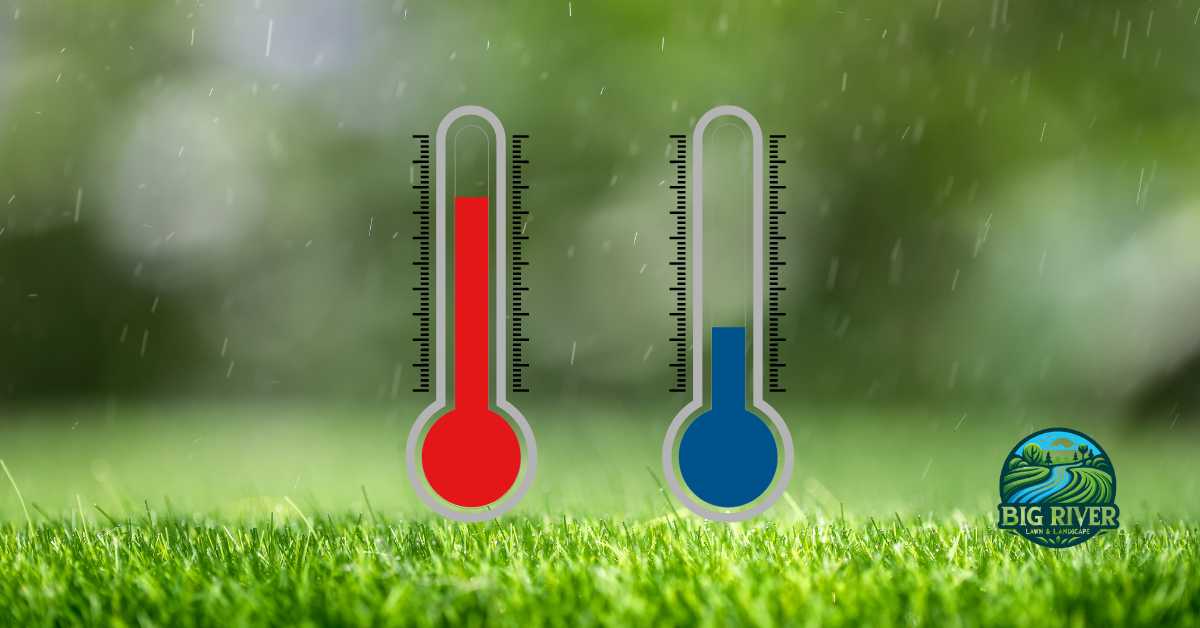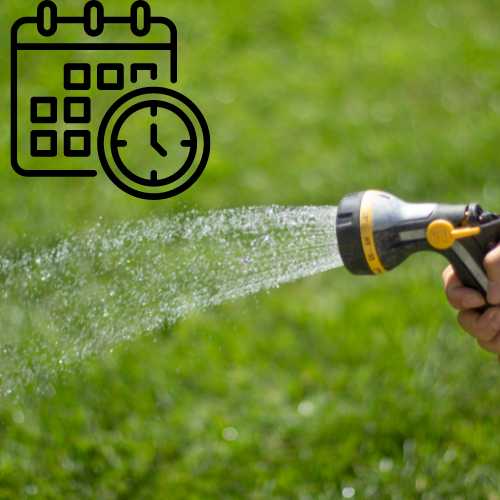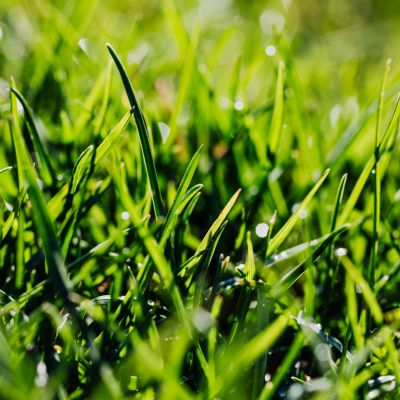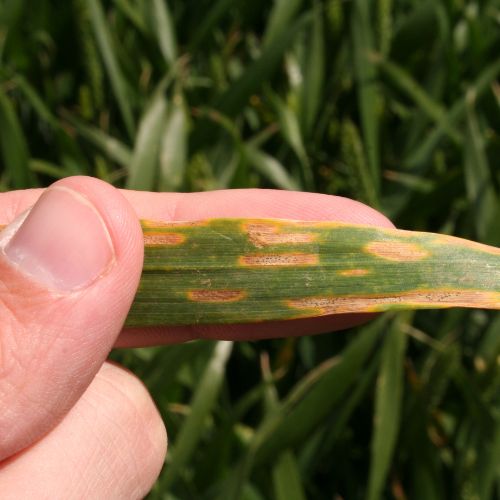What temperature is too hot to water grass? Caring for your lawn involves more than just routine maintenance; it requires an understanding of how various factors, including temperature, impact grass health. Knowing the right temperature for watering is crucial, as too much heat can hinder the effectiveness of irrigation and even damage your lawn. This guide explores the ideal conditions for watering your grass, helping you maintain a healthy, green lawn even during the hottest days of the year.
Importance of Proper Lawn Care
Proper lawn care is essential for maintaining a healthy, vibrant yard. Proper lawn care not only improves the visual appeal but also contributes to the environmental sustainability of your home. Moreover:
- Regular and effective lawn care significantly boosts the overall value of your property.
- A healthy lawn produces oxygen, traps airborne dust, and cools the air.
- Grassroots stabilize the soil, preventing erosion from wind and water.
- A well-maintained lawn provides a beautiful and safe space for activities with family and friends.
- Being around green spaces can reduce stress and enhance mental well-being.
- Proper lawn care techniques help keep the lawn healthy and attractive.
- Effective practices improve water penetration and retention, avoiding overwatering.
- A lush, well-kept lawn enhances the visual appeal and makes your home more inviting.
Impact of Temperature on Grass Health
Temperature plays a significant role in the health and growth of grass. Both extreme heat and cold can adversely affect your lawn, making it vital to adapt care strategies according to seasonal changes. Here are the impacts:
- Temperature extremes stress the grass.
- Heat can inhibit growth and cause dormancy.
- Cold may freeze roots and damage blades.
- Optimal temperatures promote healthy growth.
- Extreme heat increases water evaporation.
Factors Affecting Grass Health
The health of your lawn is influenced by a myriad of factors ranging from the type of grass species to the local climate conditions. Each factor plays a pivotal role in determining the overall resilience and appearance of your lawn, making it essential to tailor your lawn care approach accordingly. Check out in detail:
Watering Frequency and Duration
Watering your lawn correctly is more than just turning on the sprinklers. It involves understanding how often to water the lawn in summer and adjusting the duration to suit the weather conditions. This ensures the grass grows where you water it without becoming overwatered. Efficient watering practices conserve water while providing your grass with the hydration it needs to thrive.
Soil Type and Moisture Retention
Different soil types can dramatically affect moisture retention. Clay soils may hold water longer, reducing the need for frequent watering, while sandy soils might require more frequent hydration. Understanding your soil type with Proper soil testing can help you understand your soil type and significantly influence your watering schedule and technique.
Grass Species and Their Adaptability
Various grass species have different tolerances to temperature and moisture. Selecting a specific temperature for watering grass can reduce maintenance and improve lawn health. Tailoring your lawn care to a specific type of grass can enhance its health and longevity.
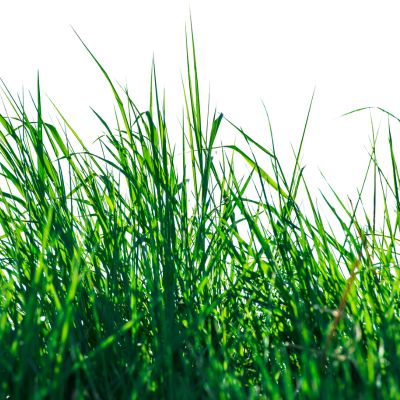
Environmental Conditions Like Temperature and Humidity
Environmental factors such as temperature and humidity must be considered when planning your lawn care. High temperatures, in particular, can stress the grass, necessitating adjustments in care. Monitoring these conditions allows for timely interventions to prevent stress and damage.
The Role of Temperature in Lawn Care
Temperature management is a key aspect of effective lawn care. Understanding how temperatures affect grass growth and health can guide when and how to water, fertilize, and manage your lawn to prevent stress and damage during extreme weather conditions. Here are the roles:
Optimal Temperature Range for Grass Growth
Grass typically thrives within a certain temperature range. When temperatures exceed this range, grass may stop growing and enter a state of dormancy to survive. Maintaining an ideal temperature range encourages robust growth and reduces the risk of dormancy.
Effects of High Temperatures on Grass Health
When it’s too hot, grassroots can be damaged, reducing their ability to absorb water and nutrients. This stress can make the lawn more susceptible to disease and pests. Mitigating the impact of high temperatures involves strategic watering and care practices.
Understanding Grass Dormancy During Extreme Heat
During periods of extreme heat, grass may enter dormancy as a survival mechanism. Recognizing this natural response helps in managing watering expectations. This knowledge is crucial for maintaining a lawn during unseasonably hot weather without wasting water.
Signs of Overheating in Grass
Recognizing the signs of overheating in your lawn is vital for taking timely action to mitigate damage. These signs often resemble what an overwatered lawn looks like, requiring careful analysis to determine the actual cause of distress. Check out the signs:
Wilting and Discoloration
Signs such as wilting or a change in color can indicate that your lawn is struggling with the heat. An overwatered lawn may show similar symptoms, making it crucial to understand the cause. Prompt action can prevent further damage and aid recovery.
Increased Susceptibility to Pests and Diseases
Stressed grass is more likely to attract pests and succumb to diseases, which can further degrade lawn health. Maintaining a healthy lawn through appropriate care and monitoring can reduce these risks significantly.
Root Damage and Reduced Growth
High temperatures can lead to root damage, which affects the grass’s ability to grow and stay healthy. Protecting the roots with proper watering and soil care during hot weather is key to preserving the lawn’s overall health.
How Hot is Too Hot for Watering Grass?
Identifying the temperature threshold for watering grass is essential to ensure effective hydration without causing heat stress or water wastage. Knowing when it’s too hot to water helps preserve the health of the lawn, even during the hottest days of summer. Get to know about it in detail below:
Identifying Temperature Thresholds for Watering
Research suggests that the best time to water lawns in hot weather is when temperatures are below 85°F. Above this, water can evaporate too quickly or even scald the grass. Setting a temperature guideline helps in planning the best watering times.
Factors to Consider in Hot Weather Watering
It’s vital to consider both the air temperature and the soil moisture level before watering the lawn. Watering grass during the day in high heat is less effective and can be damaging. Knowledge of these factors ensures that watering is done efficiently and effectively.
Alternatives to Daytime Watering During Extreme Heat
Watering the lawn in the early morning or late evening can be more effective, as temperatures are cooler and evaporation rates are lower. These alternatives prevent water waste and protect the lawn from the harsh effects of midday heat.
Best Practices for Watering Grass in High Temperatures
Adopting best practices for watering in high temperatures is critical for maintaining lawn health during heat waves. Proper timing, technique, and frequency of watering can significantly enhance the effectiveness of your watering lawn routine, ensuring your lawn remains healthy and robust even in extreme conditions. Moreover:
Timing Watering Sessions for Cooler Parts of the Day
The best time of day to water a lawn in hot weather is either early morning or late evening, avoiding the heat of the day. This practice maximizes water absorption and minimizes evaporation.
Adjusting Watering Frequency and Duration
Adjust your watering schedule based on the weather. Less frequent but deeper watering encourages roots to grow deeper, seeking moisture.
Utilizing Mulch and Shade to Retain Moisture
Applying mulch and creating shaded areas can help maintain soil moisture, reducing the need for frequent watering of the lawn.
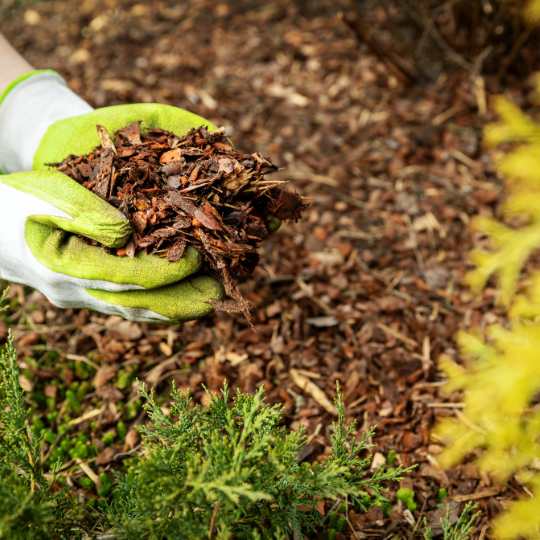
Conclusion
Understanding and implementing the right lawn care strategies based on temperature and other environmental factors can significantly improve the resilience and health of your lawn. This holistic approach ensures that your grass remains vibrant and flourishing, enhancing both the beauty and ecological balance of your outdoor space.
What Temperature Is Too Hot for Watering Grass, FAQs
What Does Overwatered Grass Look Like?
Overwatered grass often appears soggy and limp. You might notice the lawn has a consistently wet surface, leading to a yellow or pale green color. Puddles forming on the lawn after watering and the presence of new weed growth can also indicate overwatering.
What Temperature Is Too Hot to Water Grass?
Watering grass when the temperature exceeds 85°F (about 30°C) can be detrimental, as the water can evaporate quickly or scald the grass blades. It’s best to water during cooler parts of the day.
What Temperature Is Too Hot to Water Plants?
Similar to grass, temperatures above 85°F can be too hot for watering most plants, especially if the sun is intense. Watering in these conditions can lead to rapid evaporation or even cause thermal shock to the plants.
How Long to Water Lawn in Hot Weather?
In hot weather, it’s crucial to water deeply but infrequently to encourage deep root growth. Aim for about 20-30 minutes per watering session, ensuring the water penetrates deeply into the soil, about 6-8 inches down.
Is It Bad to Water Grass When It's Hot?
Watering grass in the heat of the day is not advisable as the water can evaporate before it soaks into the soil, which is wasteful and can also cause the burning of the grass blades due to the magnification of the sun’s rays through water droplets. Early morning is the ideal time for watering the lawn.
What Is The Best Time to Water Lawn in Hot Weather?
The best time to water the lawn in hot weather is early in the morning before temperatures rise and winds are calmer. This timing reduces evaporation and gives the grass blades time to dry off before nightfall, reducing the risk of fungal diseases.

